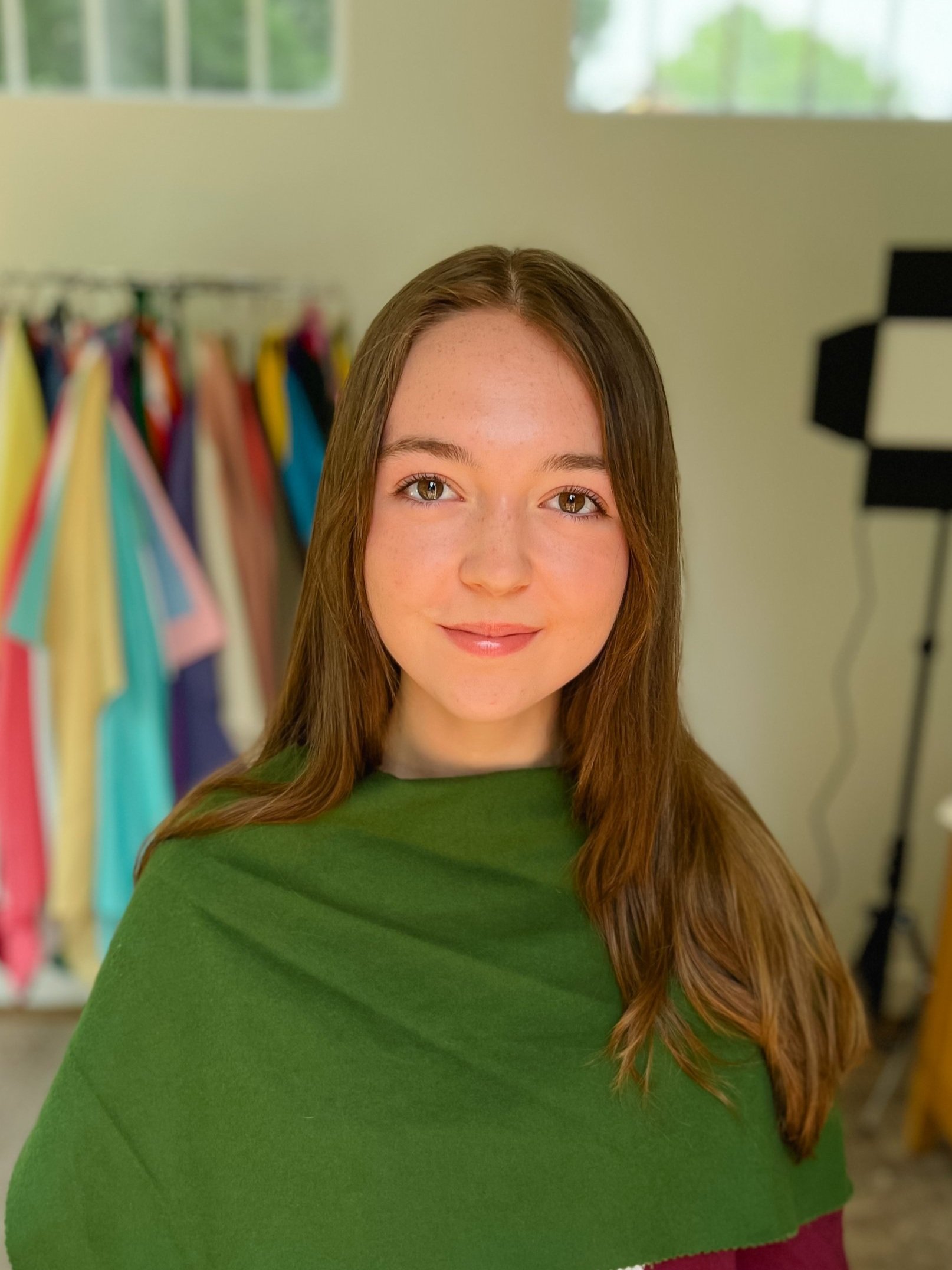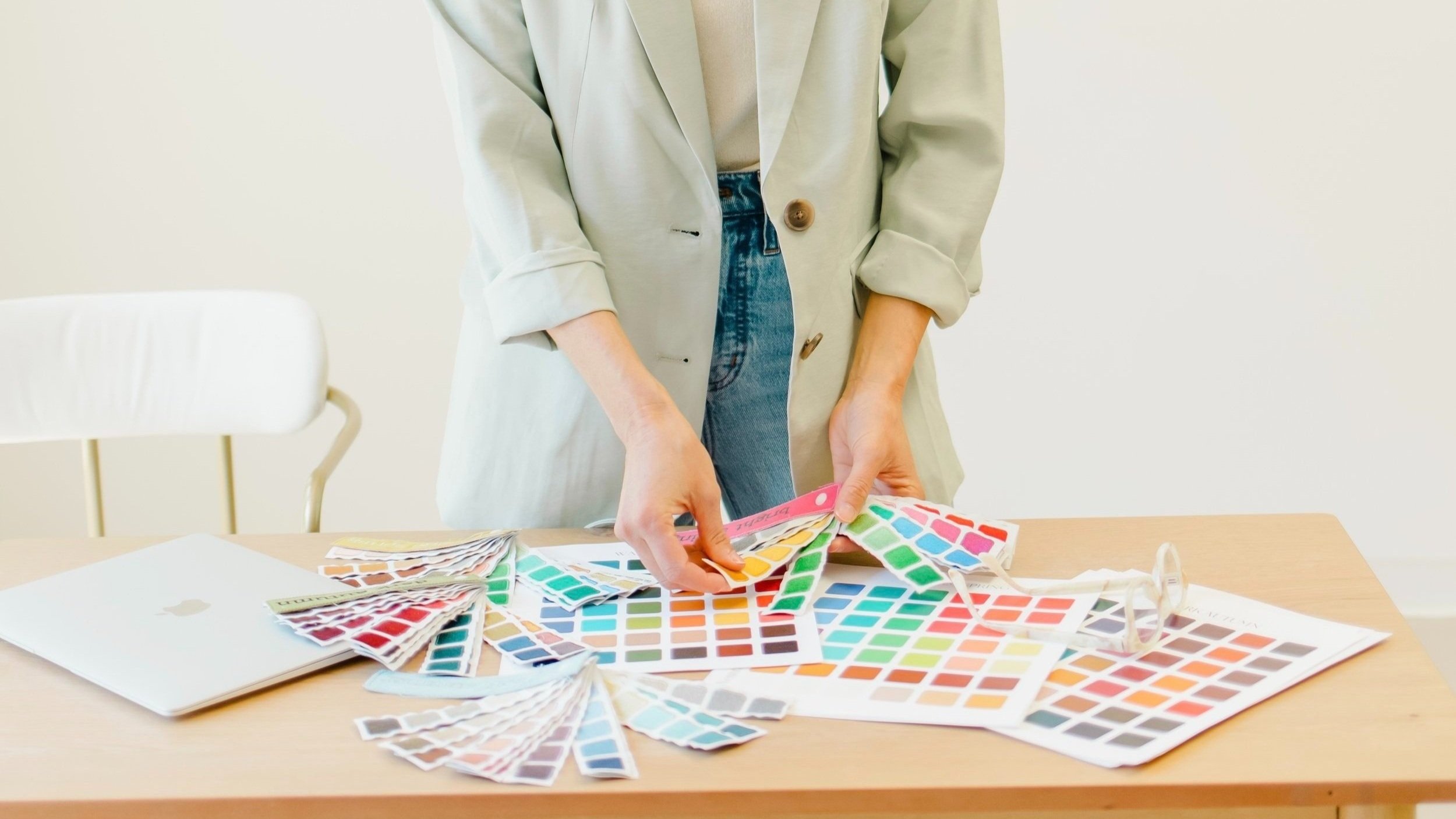Warm | True Autumn: The Complete Guide
The Warm | True Autumn color palette is defined by its rich, earthy, and warm tones. The key characteristic of the Warm Autumn palette is its "warmth," which harmonizes beautifully with those whose hair, skin, and eyes have a naturally warm and rich quality. Enjoy this comprehensive guide which covers examples of Warm Autumns, outfit ideas, make-up, hair, denim, jewelry, and more!
Are you a Warm | True Autumn?
When you look in the mirror, you'll notice that your hair, skin, and eyes have a warm, earthy depth with a rich quality. Your natural coloring shows medium contrast. Warm tones, like golden browns and burnt oranges, will enhance your appearance more than cooler shades.
Hair: brown, auburn red
Skin: warm undertones
Eyes: brown, hazel, warm green
Warm Autumn Examples
Here’s a selection of Warm Autumn examples with their natural hair color from my in-person color analysis consultations.
Were you analyzed correctly?
To ensure you were correctly identified as a Warm Autumn, here are some helpful tips to verify your results.
Photo Comparison: Do you resemble the Warm Autumn clients in the photos above? Do you fit the description of eyes, skin, and hair color?
Gold vs. Silver: Warm Autumn is 100% gold. When you hold silver against your skin, does it seem to stand out in a way that feels off or less flattering?
Compliments: Do you often receive compliments when wearing Warm Autumn colors?
Autumn Colors: Do you notice when you wear Soft Autumn colors, they slightly wash you out? Or if you try Dark Autumn colors, they feel too dark?
Warm Autumn colors are like the rich, earthy tones of a peak autumn landscape—imagine golden yellows, warm browns, and rich oranges. These shades are full of warmth and depth, perfectly complementing the natural glow of a Warm Autumn complexion. Unlike the softer tones of Soft Autumn or the deeper shades of Dark Autumn, Warm Autumn’s palette is rich and full of life, offering a bold yet harmonious look.
Want a free Warm Autumn color palette to save to your phone? Click here!
Color Dimensions
Warm Autumn colors have these characteristics:
Hue: Warm Autumn is defined by its warmest tones, with colors that have yellow undertones. This means the palette has very few blues. Instead, it features warmer shades of blue, like marine navy, teal, peacock, along with plenty of yellows, greens, and warm browns.
Value: The colors in Warm Autumn range from light to dark, with a focus on medium to dark shades. Light colors like eggshell/beige are present, but the palette leans more toward richer hues.
Chroma: . While the colors aren’t intense nor bright, they may appear more vivid due to the natural warmth that draws the eye.
Warm Autumn and Soft Autumn share a warm, earthy quality, but they differ in their intensity and depth of color.
Warm Autumn: Features rich, earthy, and warm tones like burnt oranges, mustard yellows, and forest greens. The colors are warm and full-bodied, reflecting the rich hues of autumn foliage.
Soft Autumn: Has a softer, more muted palette with gentle, earthy tones like walnut brown, soft olive, and terracotta. The colors are warm but more toned down, with a subtle, blended quality.
While both seasons embrace warmth, Warm Autumn is more intense and saturated, whereas Soft Autumn offers a more subdued, blended warmth.
To determine if you’re a Warm Autumn or Soft Autumn, consider the following:
Warm Autumn: If your natural coloring has medium contrast with bold warmth, and you shine in shades like mustard yellow and tomato red, then this is for you.
Soft Autumn If your natural coloring is softer and the warmer autumn hues like mustard yellow and tomato red overwhelm your complexion, adding redness on your skin, you’re likely a Soft Autumn
Warm Autumn and Dark Autumn are both part of the Autumn palette, but they have distinct characteristics.
Warm Autumn: Showcases rich, warm hues like deep golden browns, mustard yellows, and warm tomato reds. This palette exudes a bold warmth.
Dark Autumn: Features deeper, darker colors such dark plums, dark forest greens, and curry yellow. The palette is characterized by its darker, more dramatic warmth and high contrast.
To determine whether you’re a Warm Autumn or Dark Autumn, consider these key distinctions:
Warm Autumn: If your natural coloring has medium contrast and embraces bold warmth, you’re likely a Warm Autumn.
Dark Autumn: If your coloring features more high contrast with darker hair tones, you may be a Dark Autumn.
Discovered you’re a Warm Autumn and ready to shop?
Colorbook offers a unique real-time shopping experience tailored to your color season and style. Enjoy a fun and easy way to create your perfect Warm Autumn wardrobe!
Beautiful neutrals
Perfect neutral colors include Eggshell White, Beige Olive green, Camel, Tan, Caramel, Marine navy, Khaki, Walnut, Teal, Golden brown, and Brown.
Neutrals to avoid
Dark Colors: Black is too harsh and can make you look older. Instead, choose soft brown or dark olive greens.
Bright Whites: True white is too cool for Warm Autumn. Opt for lighter, warmer neutrals like eggshell, beige, and sandy tones.






Choose richer denim
Opt for deeper, rich shades of denim. These richer tones complement Warm Autumn colors, adding depth and warmth to your look.
Avoid Light Denim
Light denim can detract from the rich, warm tones of the Warm Autumn palette. Instead, stick to darker, more intense hues to enhance the overall warmth and depth of your outfit.
Here are some stylish ways to showcase your Warm Autumn colors while keeping your look natural and balanced:
Neutral + accent
Combine a neutral with any of your Warm Autumn colors. For example, pair chocolate brown with mustard yellow.
Denim + color
Choose medium to dark denim and pair it with any of your palette colors.
Color blocking
Wear two complementary colors together, like teal and burnt orange, to create a striking yet harmonious outfit.
The Warm Autumn makeup is all about warm, rich hues that enhance your natural beauty.
Blush: Shades that complement a warm autumn complexion include terracottas, warm corals, and apricot.
Lipstick: Colors that flatter your coloring include warm tones for that fresh, natural look. Consider shades like: brick red, warm red, terracotta, cinnamon, rust, and burnt sienna. See the above colors for inspiration!
Mascara: For mascara, you’ll want to go with a brown or brown/black mascara. Black can appear too harsh against your complexion, creating a warm, flattering effect.
Eye Shadow: Eye shadow colors that complement your warm complexion include ranges of these colors: Gold Pearl, Warm Nude, Terracotta, Copper Pearl, Deep Brick Red, and Rich Warm Brown.
Click here for my favorite products that I use with my ColorBook clients in my studio.
Here’s a guide to help you choose the best metals, stones, and other accessories to complement your Soft Autumn palette.
Metals & Jewelry
Choose warm metals like gold, copper, bronze, and brass to complement your natural coloring. These metals enhance the rich, earthy tones of this palette.
Stones
Opt for gemstones with warm, earthy hues such as turquoise, amber, topaz, jade, coral, jasper, peridot, and citrine. These stones highlight the rich tones in your coloring and add a warm, harmonious touch.
Other Ideas
Wood and other natural materials are perfect for Warm Autumns, as they resonate with the season’s earthy, organic vibe.
What to Avoid
Bright, shiny metals and overly sparkly bling can overwhelm your coloring and detract from your natural beauty.
For those with a Warm Autumn palette, the key is to avoid cooler colors:
Cool Colors:
Avoid cool, bright hues such as cool blues and crisp whites, as they can create an unflattering contrast against your warm, rich tones.
Steer clear of cool grays and summer colors which can overshadow your natural warmth and disrupt the harmony of your look.
Here’s the hair advice I share with my Warm Autumn clients, along with examples of their natural hair color subtly highlighted by the sun.
Embrace your natural color
Your natural hair color is perfectly suited to your Warm Autumn palette! Embrace its natural beauty as it will harmonize beautifully with your colors.
Opt for warm, golden hues
If you choose to color your hair, select warm shades that complement your season. Caramel and chestnut are excellent choices that enhance your natural radiance. Avoid any bright highlights as they can wash you out.
Warm Autumn hair characteristics
Warm Autumn hair can range from auburn red to medium golden brown.





These photos of Warm Autumn gray hair showcase the warm gray with a subtle yellow tint often seen in those with warmer undertones. This client looks stunning in her Warm Autumn colors, offering the perfect inspiration for embracing gray hair with confidence!




When adding patterns and prints to your wardrobe, consider these tips to ensure they complement your natural coloring.
Warm Autumn Colors & Patterns
Choose patterns that highlight the rich, warm hues of the Warm Autumn palette. Look for designs with earthy textures, natural motifs, and subtle patterns that reflect the season's warmth.
Opt for patterns featuring colors like deep golden browns, warm greens, and rich reds to complement your natural warmth and depth.
What to Avoid
Avoid geometric patterns and any bright prints as they may clash with your warm, rich appearance.




What is the difference between the Autumn seasons?
Whether you’ve been told you’re an Autumn in a color analysis or you’re just curious if you might be, I’m excited to share a unique collage showcasing Soft Autumn, Warm (True) Autumn, and Dark (Deep) Autumn. These real-life examples from my in-person consultations will help you see the distinct patterns and personal coloring for each Autumn type. Dive into these vibrant photo collages to find out where you fit best and embrace your Autumn palette with confidence!

Join the list!
Get curated color inspiration, seasonal lookbooks, and expert tips sent straight to your inbox. Sign up for our free newsletter and start feeling inspired today!





























